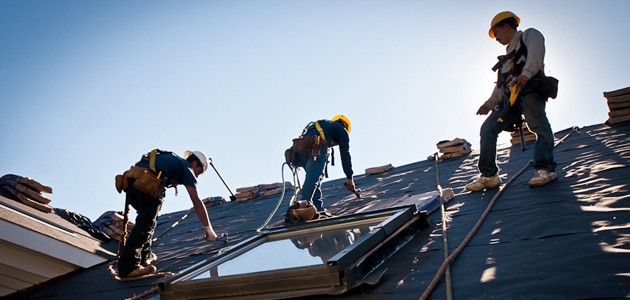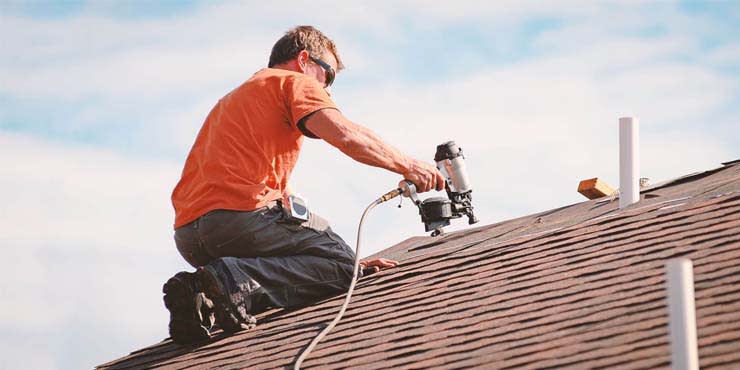
People do not tend to think much about their air conditioning system till something goes wrong. We're readily available 24 hours a day for emergency repair work if anything goes wrong with your HVAC systems.
Cooling History
For many years, human beings have been establishing ways to prevent being hot and stuffy. Ancient Egyptians used to cool their indoor air by hanging damp mats on their entrances. Romans determined how to run fresh water through their indoor pipelines to cool their homes. Even Benjamin Franklin - the innovator whose kite experiment revealed much of what we now learn about the nature of electricity - meddled the a/c world, dealing with colleagues to determine how to control liquids that have refrigerating homes. Despite these, and other, contributions, the creation of the very first modern air conditioning system in 1902 is credited by many to Willis Carrier, an American engineer. If we fast forward over 100 years considering that Carrier's invention, human beings are more conscious of their comfort than ever.
2. A/C Anatomy
It's helpful to understand how the air conditioner works in the first place. This will help all other info to make sense, and will provide you a huge appreciation for the experts whose job it is to keep you're A/C in working order. The little things make a huge distinction.
- Inside your A/C, there is a set of pipelines filled with refrigerant, which (just as it sounds) cools-- or cools-- the air around it. The set of pipelines is also called an evaporator coil.
- Hot air from outdoors is pumped into your air conditioning system by a blower (or fan), running the air over the cooling coils, and blowing it into your home.
- The refrigerant in the evaporator coil changes from a liquid into a gas while absorbing heat from the air.
- At the same time, the hot air inside your home is being pushed outside with another fan.
- The refrigerant is pumped outside your house to another coil (called a condenser), releasing its heat and altering back (condensing) into a liquid.
- The refrigerant is returned and forth within the air conditioner by a pump called a compressor, which regulates the rate of movement so that the refrigeration and condensation happens within the right coil.
- Your A/C likewise has a motor, which runs the compressor.
3. Set The Right Temperature
As a basic rule, your air conditioning system can keep indoor temperatures about 20 degrees cooler than outdoors. This suggests that on a 100-degree day, your A/C may struggle to cool your house below 80 degrees. Setting the thermostat any lower than that will strain your unit needlessly, and will most likely result in it constantly running in a worthy effort to reach the cooler temperature. If the heat is intolerable, attempt using a ceiling, table, or other kind of fan to keep the air moving.
If you have a central unit, you can acquire a thermostat with a timer that can be programmed to adapt to higher temperatures when you're gone, and cooler temperature when you're house. It's not a good concept to turn your unit off entirely unless you're going on getaway. Turning it off will lead to the unit needing to work extra difficult to cool the home at a later time.
4. Change Your Filters
If you have a main or window system, you need to alter your filters about once a month during the cooling season. At home filters have a minimum efficiency reporting value (MERV), which is a number between 1 and 12. A greater MERV ranking means higher purification, and it is generally recommended that you use filters of a 6 or higher.
Modification Your Filters
If you're wondering why the filters are necessary, here's a quick explanation. They have a double purpose: 1) they keep particles from building up on the evaporator coil, which might ultimately stop the system from working, and 2) they avoid particles from being launched into the air inside your house.
The longer you keep a filter, the more particles it captures. If you wait too long to alter it, then the filter itself ends up being a pollutant since it can no longer hold the brand-new dirt being blown around. Homes situated around building and construction or dirt roadways tend to require filter modifications more frequently, in addition to those with family pets. Filter gunk (not a scientific term) will prevent the air from streaming easily, which will avoid you from optimizing your comfort. Modification your filters to keep the breeze ... and keep the peace.
5. Tidy Your Outdoor Condenser
Your condenser needs to survive a lot being exposed to the elements throughout the year. If you discover that your system is not cooling too, it might be because the condenser needs cleaning. Leaves, branches, yard, and other particles can get captured in its fins, and this will block its cooling capability.
Tidy Your Outdoor Condenser
Prior to you get started with the cleansing, make sure to turn the condenser off. This can be done by pulling out a fuse block linking the system to your home, or moving the switch to the "off" position. Make sure that the temperature level is at least 60 degrees outside so that you can test the ac system to be sure that it works.
Tidy the fins by first using a soft brush attachment on your vacuum. Be careful, as the fins can bend quickly if you're too rough. If you discover that they are bent, attempt using a butter knife from your cooking area to push them back into shape. After vacuuming, utilize a hose pipe to rinse the remainder of the debris. Keep in mind to refer to your owner's manual for instructions that specify to your system.
That takes care of the exterior. Now let's speak about the condenser's withins.
6. Inspect Your Coolant Levels
The amount of refrigerant in your A/C system is called its "charge." If there's a leak and the refrigerant charge decreases, you will have problems. A leak will decrease your unit's ability to work appropriately, and pop over to this site your home will not get the cooling it needs.
Because of international warming, discovering the best cooling gases to use in property and commercial homes has been a pretty big deal. Some have actually been figured out to be ozone-depleting substances by the Environmental Protection Agency (EPA), and are therefore prohibited from being used in brand-new units. Here's a run-down of what's ok and what's not:
- HCFC-22: This gas was banned in brand-new equipment in 2010 by the EPA. It is just available for older model A/C systems.

- R-410A: This is one alternative to HCFC-22, and is being utilized in the United States. It has a high international warming result, it causes no ozone exhaustion.
- R-32: This gas is being examined by the EPA, and is known for being slightly combustible. Its international warming impact is moderate, and it triggers no ozone deficiency.
- Hydrocarbons: These are being used in business refrigeration, however not yet in homes, unless systems have been revamped. The worldwide warming result is low and there is no ozone deficiency.
It's not a great idea to attempt handling any of these coolants by yourself, so call your HVAC professional if you suspect that something is amiss with your coolant levels.
7. Optimize Your A/C's Effectiveness
If you have a fan, run it when your A/C is on so that the cool air can distribute more easily. You must also keep all doors in the home open so that air can flow freely.
If you have to make house repair work, such as changing your windows or your roofing system, make decisions with the understanding that insulation is everything. A home that is not well insulated will result in air leaks ... which force your ac system to work harder than it would typically need to. Correct insulation might cost more on the front end, however gradually, the savings will be considerable.
Some other tricks to optimizing your ac system's effectiveness include:
- Using your washer/dryer during cooler times of the day.
- On cooler nights, opening windows so that the outdoor air can fill the house.
- Making sure your ducts are sealed to prevent air leaks. You can seal them yourself with mastic-- the thick, white, waterproof sealant that can be painted over them. Small ducts leakages can be sealed with foil tape.
- Keep the blinds on the west side of your home closed on hotter days.
8. Take Note Of Efficiency Rating
If you have a main A/C unit, examine the seasonal energy-efficiency ratio, or the SEER. In a window unit, it is called the energy-efficiency ratio (EER).
Acquire an unit that is an excellent match for your climate. If you live in a damp area, find an A/C that likewise dehumidifies.
9. Get An Air Conditioning Check-Up Annually
Just like our bodies and cars and trucks require check-ups, air conditioners benefit from them. Make sure your expert take a look at the following: Get An Air Conditioning Check-Up Annually
- Inspecting and cleaning coils,
- Replacing fan belts if needed,
- Checking refrigerant charge and pressures,
- Cleaning or replacing filters if you're not able to do it,
- Lubricating motors and bearings,
- Cleaning and inspecting blowers and fans,
- Inspecting controls and safeties, and
- Checking temperature controls.
10. Humidity Matters More Than Heat
If you've ever observed the condensation that can accumulate around air conditioning vents, you are conscious of the dehumidifying residential or commercial properties that the majority of A/C units have. They actually pull the wetness out of the air.
That your A/C does not have to do all the work alone, be sure to use your exhaust fans when bathing, showering, and cooking. You can likewise utilize a fan to assist blow a few of the air outdoors. If these alternatives aren't working as they should, acquire a different dehumidifier to help things along. Sticky skin is the least of your concerns when considering the risks of mold and damp environments. It can result in upper breathing tract problems, coughing, wheezing and inflammation of asthma signs.
11. Choose A Unit That Makes Sense For You
The size of your air conditioner must be in proportion to the size of the space you desire to cool off. Energy Star uses a chart that will assist you decide how much cooling capacity, determined in British thermal units (BTU), you will need per hour.
Another thing to think about is the perks that occur with your purchase. When negotiating rates, take note of whether the price includes a service plan, discounts on repair work, or a labor service warranty. Acquiring is only he primary step ... upkeep soon follows.
12. Pick The Right HVAC Professional
The Air Conditioning professional you select need to be licensed by a respected company such as the Air Conditioning Contractors of America (ACCA). When you call them to come to your home make certain to know about your system's brand name as well as the level of cooling and convenience you are wanting.
Real experts will make sure you comprehend exactly what is happening with your central air unit and will patiently put in the time to answer all your questions.
About Pro Choice Orlando Roofing Company
Our company offers premium craftsmanship at unbeatable pricing. Customers choose Pro Choice Roofing because we truly stand behind our products, and offer quality that simply isn't found in the roofing industry. We provide asphalt shingle, metal, slate, tile, cedar shake and commercial roofing services! We are a one-stop shop for our customers, including other exterior services such as window replacement, gutter installation and siding replacement.
For more information contact:
Pro Choice Orlando Roofing Company
1060 Woodcock Rd #140
Orlando, Florida 32803
(407) 743-3793
https://www.prochoiceorlandoroofing.com
[email protected]